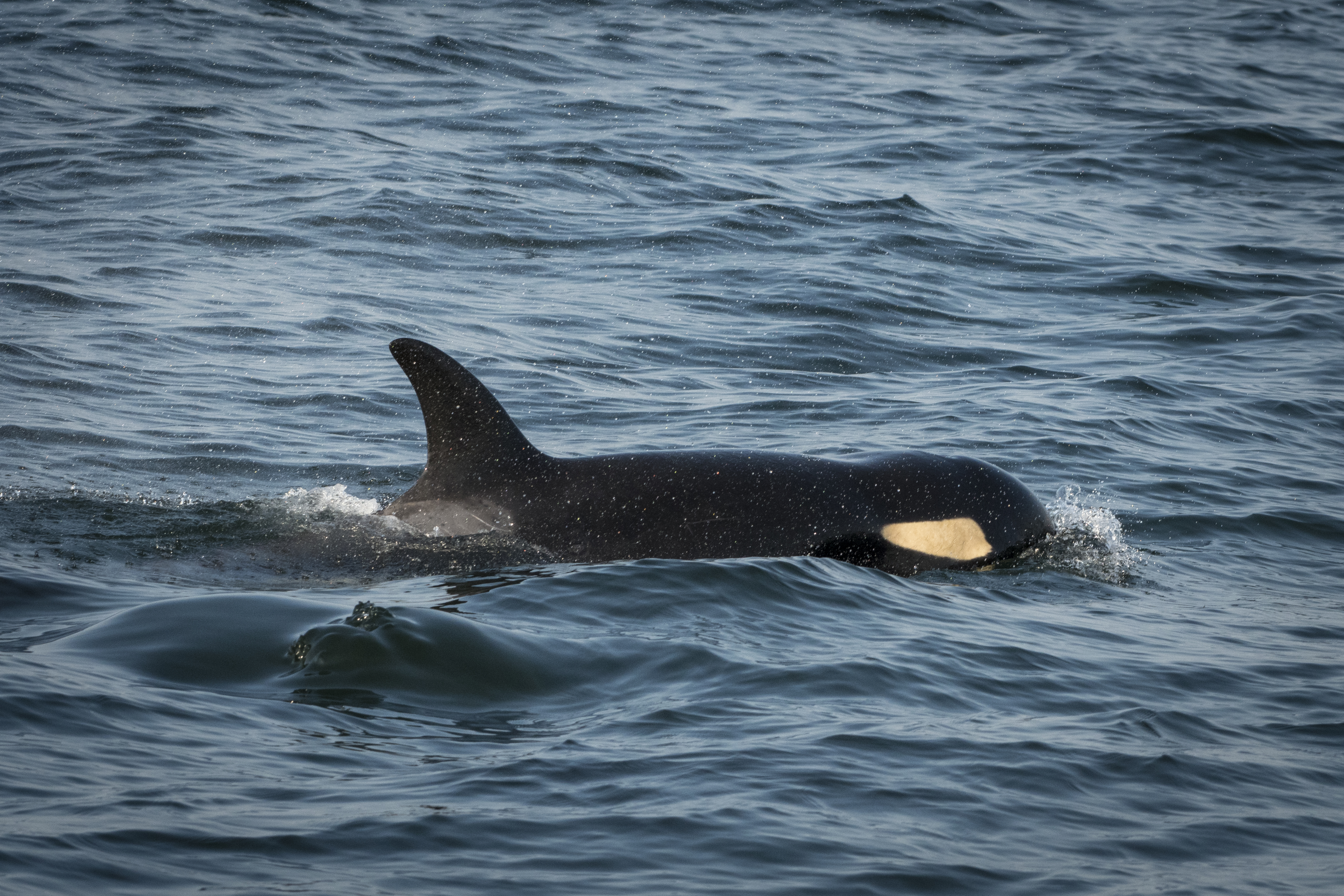Scientists Are Trying Desperately to Save a Starving Orca. Will Their Efforts Pay Off?

A specialized response team in northwest Washington made a valiant attempt last weekend to save a starving young killer whale (Orcinus orca) named Scarlet, or J50.
On Sunday (Aug. 12), fishers with the Lummi Nation, a Native American tribe in the state, assisted researchers by releasing eight hatchery-raised, live salmon from their boat, about 75 to 150 yards (69 to 137 meters) in front of Scarlet. Observers watched Scarlet dive down toward the fish, but from their view, they couldn't confirm whether she ate the fish. The researchers also observed Scarlet socializing with members of her pod occasionally, though she frequently fell behind when swimming in strong currents — signs of her poor condition.
Scarlet is a 3-year-old female (born in December 2014) who is part of the J pod, one of three small groups of orcas within the endangered Southern Resident killer whale subpopulation. The J pod also includes J35, or Tahlequah, a female whose calf died a half-hour after it was born on July 24. Biologists watched the grieving mother carry her dead calf around for 1,000 miles (1,600 kilometers) for 17 days. [In Photos: Response Teams Try to Save Starving Killer Whale]
As biologists were tracking Tahlequah, they also started paying close attention to Scarlet. "She has always been small for her age, but researchers over the last few months have noticed increased emaciation," Jim Milbury, a spokesman for the National Oceanic and Atmospheric Administration (NOAA), said during a press call Monday (Aug. 13).
But before scientists could decide how to help Scarlet, the orca and her pod had traveled offshore into open water, which meant they were out of the reach of response teams for a couple of days. In that time, biologists, fishers and concerned citizens worked together to develop two plans, Live Science previously reported — first, to administer antibiotics to Scarlet with a dart, and second, to feed her live salmon served from a boat. Both plans would be logistically challenging and require calm ocean conditions and a clear path to Scarlet.
On Aug. 6, Scarlet reappeared with her pod in Canadian waters near the entrance to the Strait of Juan de Fuca, according to NOAA. Boat-bound response teams followed her, monitoring her condition and keeping tabs on her as they prepared for action.
Fortunately, on Aug. 9, the conditions were right for the Vancouver Aquarium's veterinarian and assistants to administer Scarlet an antibiotic through a dart and collect a breath sample, which will help determine if she has an infection, NOAA reported.
Sign up for the Live Science daily newsletter now
Get the world’s most fascinating discoveries delivered straight to your inbox.
The research teams continued to track Scarlet by boat in the days following the antibiotic injection. They watched her fall behind her pod by as much as half a mile (1 km) when swimming against a strong current. The researchers noticed she wasn't eating, either, even though the salmon were plentiful in the area. The researchers were still very concerned about Scarlet's health and decided to move forward with the feeding experiment.
So, on Sunday, favorable conditions allowed the response teams to try feeding Scarlet live salmon. Fishers from the Lummi Nation launched the live fish from their boat using a tube-shaped slide to direct the fish toward Scarlet, but they couldn't tell if she ate the fish, or even if she saw the food, NOAA reported.
Now, the researchers are reviewing aerial footage captured by drones, to see if they can determine whether Scarlet actually ate the fish. If it looks like she did, the teams may consider another attempt to feed her — this time, with fish containing antibiotics or medication, depending on what researchers learn from her breath sample.
While the researchers were conducting the feeding experiment, they also collected a fecal sample. But they aren't sure yet if it's from Scarlet, her mom or her sibling, who are also part of the J pod and were in the vicinity of Scarlet at the time of collection. Once analysts determine which orca the sample belongs to, they can use it to test for clues about the animal's health.
As of yesterday (Aug. 14), the J pod was seen heading back out to open water; the response teams are taking stock of what they've learned. For now, teams in the U.S. and Canada are closely watching Scarlet and her pod, and they will continue to take fecal or breath samples whenever conditions allow.
Original article on Live Science.

Kimberly has a bachelor's degree in marine biology from Texas A&M University, a master's degree in biology from Southeastern Louisiana University and a graduate certificate in science communication from the University of California, Santa Cruz. She is a former reference editor for Live Science and Space.com. Her work has appeared in Inside Science, News from Science, the San Jose Mercury and others. Her favorite stories include those about animals and obscurities. A Texas native, Kim now lives in a California redwood forest.









